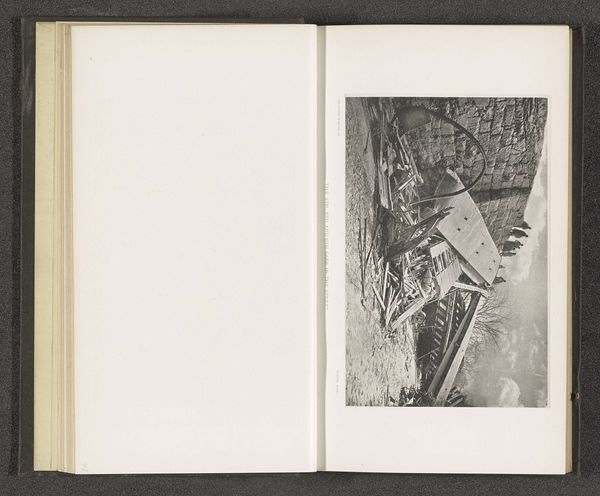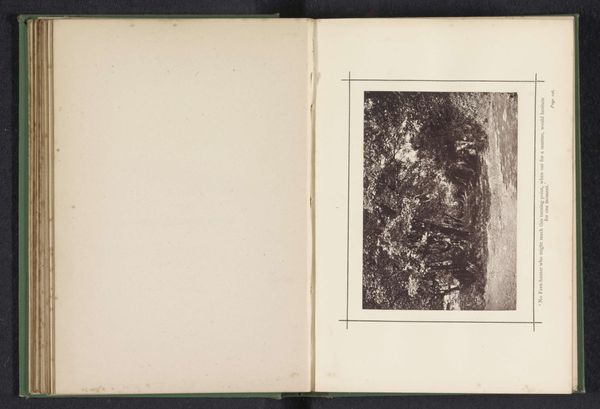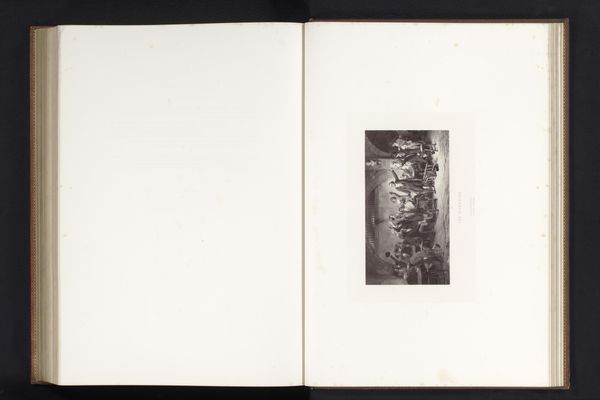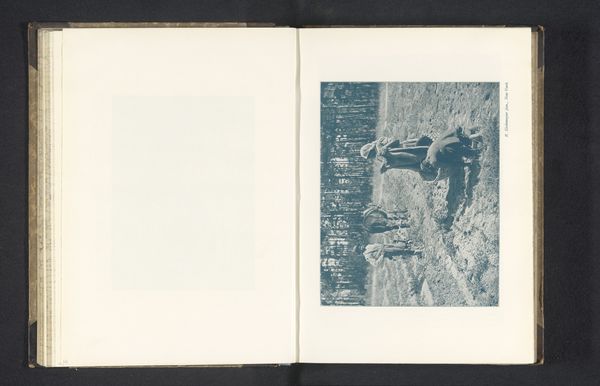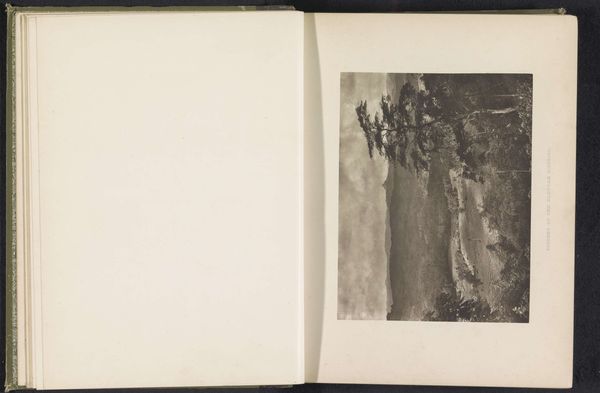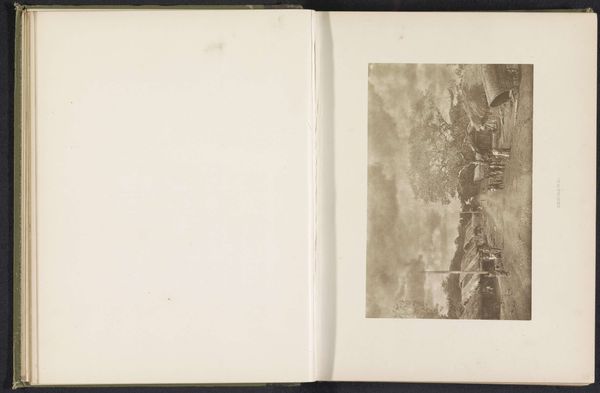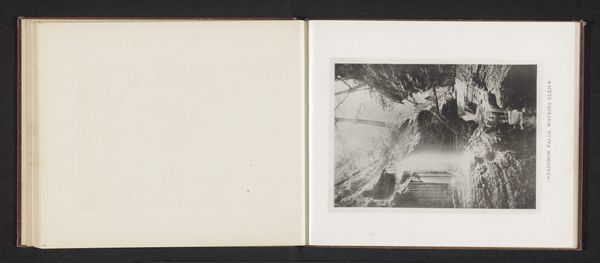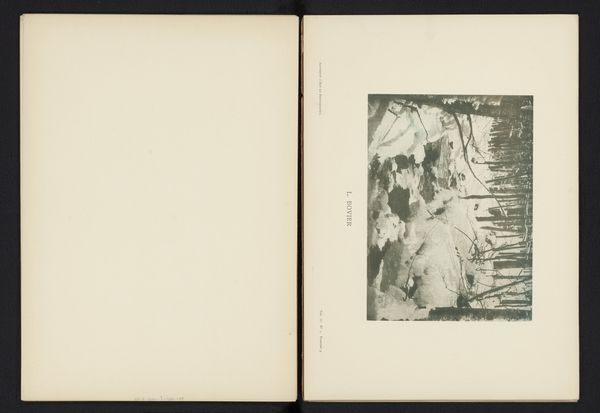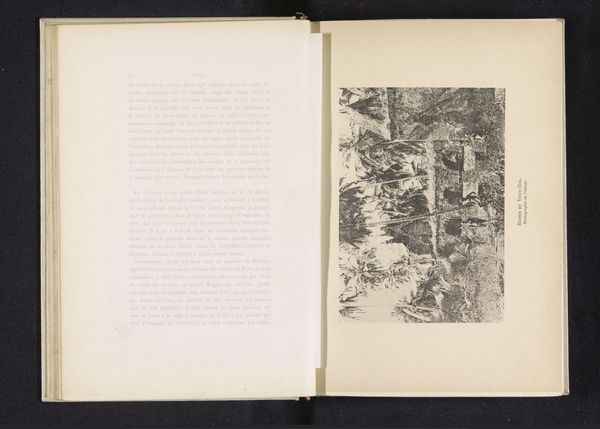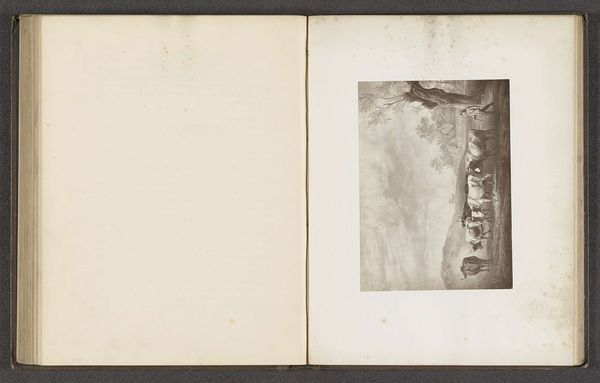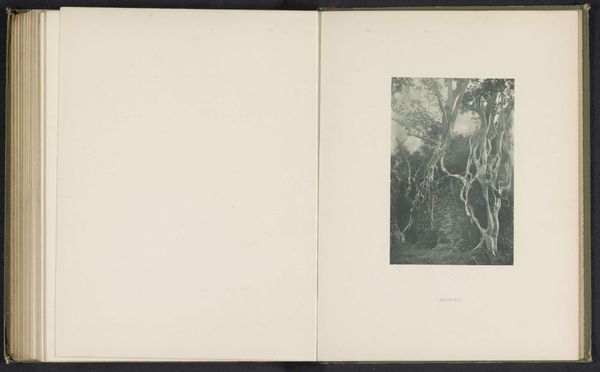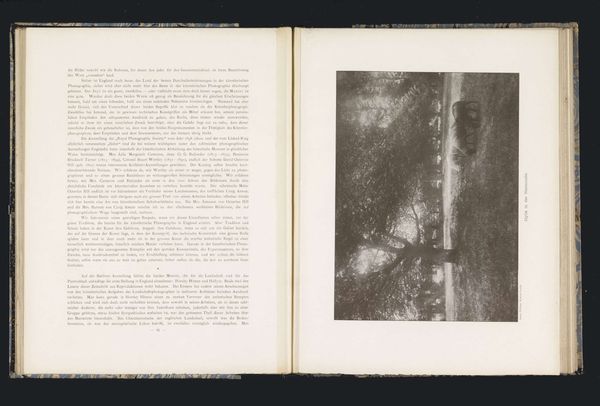
photography, gelatin-silver-print
#
landscape
#
photography
#
orientalism
#
gelatin-silver-print
Dimensions: height 149 mm, width 185 mm
Copyright: Rijks Museum: Open Domain
Curator: Henry William Cave’s photograph, “Rest-house at Nalanda,” was taken in 1896. It’s a gelatin-silver print and part of a larger body of work documenting Ceylon. Editor: It has an incredible sense of depth! The way the light filters through the dense foliage, it feels almost palpable. The tonal range achieved in this gelatin-silver print really brings out the textures of the trees and the subtle architectural details. Curator: Absolutely, and the landscape as genre—particularly in the context of British colonialism— becomes a critical lens. Cave’s work needs to be understood within the frame of Orientalism and empire. His photographs offered Western audiences an idealized, picturesque vision of Ceylon. This framing often obscures the social and political realities of the time. Editor: I appreciate the historical layering you are pointing out, and at the same time I cannot resist being pulled in by the geometry within. Look at how the verticality of the palms contrast with the horizontal emphasis of the rest-house. Note also how the organic forms of the vegetation intertwine and repeat through dark and light patterns, like a dance! Curator: Precisely! And to expand this a bit, consider the term "rest-house" itself—what does it mean for the colonizer versus the colonized? These spaces of supposed leisure were often built upon exploitative labor practices, functioning to serve the colonial administration and merchants. Editor: Yes, your approach makes the symbolic violence evident—it brings in complex postcolonial narratives. And if we zoom out from these contextual concerns for a moment, and think formally again—see the overall effect of the gray tones to convey mood and atmosphere. The artist utilizes shades of gray and brown so meticulously to evoke feelings. Curator: It is hard to look away. I appreciate your bringing us back to the artistic qualities—something that often get overshadowed within discourse focused around postcolonial theory. Editor: Similarly, your ability to excavate and unveil the larger ideological and historical circumstances behind what might feel like simply beautiful picture of tropical escape truly moves us forward.
Comments
No comments
Be the first to comment and join the conversation on the ultimate creative platform.
